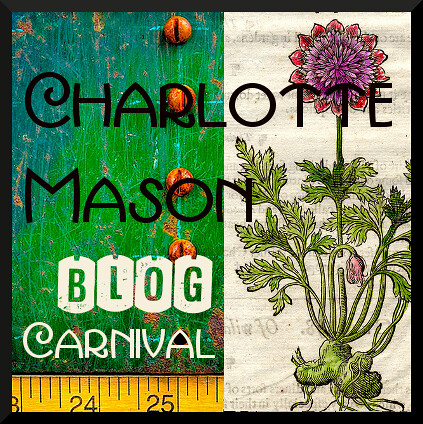
How many of us remember learning to read? Unless it was traumatic (a mean teacher, or some learning difficulty), I would guess you're probably like me. I do remember reading my first books, I even remember some of my very first readers (they were Abeka books). But I don't remember clearly enough now to remember HOW I learned to read. I don't remember who taught me, nor which was the first step, nor when and how I figured out the trick to the silent final e's, etc. But I did learn to read. And if you're here, chances are you did too! But, it's all a little blurry now isn't it? ...kind of mysterious. Charlotte agrees:
Many persons consider that to learn to read a language so full of anomalies and difficulties as our own is a task which should not be imposed too soon on the childish mind. But, as a matter of fact, few of us can recollect how or when we learned to read: for all we know, it came by nature, like the art of running; and not only so, but often mothers of the educated classes do not know how their children learned to read. 'Oh, he taught himself,' is all the account his mother can give of little Dick's proficiency. Whereby it is plain, that this notion of the extreme difficulty of learning to read is begotten by the elders rather than by the children. [p201]However, not all mysteries are scary! :) Children don't automatically share the nervous feeling about learning to read that we might have in regard to teaching them! Let's dispel some of the mystery, so that we can relax and enjoy the process with our kids.
So, what does it take to read?
A child already has knowledge of many things and boasts a vast vocabulary by the time he or she is five or six years old. All reading is, is the ability to recognize words as the written symbols representing real things or actions that he already has some kind of relationship with. [p208]
“Learning to read is no more than picking up, how we can, a knowledge of certain arbitrary symbols for objects and ideas.” [p216]The basic skills needed in order to acquire the ability to read consist in 1) learning to recognize a good number of words by sight (as a sum of their parts) and 2) the child must know the sounds of the letters and acquire power to throw given sounds into new combinations. [p216]
“If words were always made on a given pattern in English, if the same letter always represented the same sounds, learning to read would be an easy matter; for the child would soon acquire the few elements of which all words would, in that case, be composed. [like Spanish for example] But many of our English words are, each, a law unto itself; there is nothing for it, but the child must learn to know them at sight; he must recognize 'which', precisely as he reocognizes 'B', because he has seen it before, been made to look at it with interest, so that the pattern of the word is stamped upon his retentive brain. This process should go on side by side with the other – the learning of the powers of the letters; for the more variety you can throw into his reading lessons, the more the child will enjoy them.” [p205]

When should we begin?
This question is left to individual mothers and their individual children. Charlotte points out that it is open to discussion whether the child should acquire the art unconsciously, from his infancy upwards, or whether the effort should be deferred until he is, say six or seven, and then made with vigor. [p200] There's no wrong answer! Isn't that a relief?! Heheh.
There does come a time in which if the child has not turned his attention toward the skill entirely of his own volition, he will need to be directed (this between 6 and 7). But this does not imply that it is to be any less fun,
“We cannot excuse our volatile Tommy, nor is it good for him that we should. It is quite necessary he should know how to read; and not only so-- the discipline of the task is altogether wholesome for the little man. At the same time, let us recognize that learning to read is to many children hard work [especially those tactile learners!], and let us do what we can to make the task easy and inviting.” [p214]Are you still a little nervous? Continue to dispel the scary myth by familiarizing yourself with CM's steps to teach reading (which I will be outlining in the following posts). I encourage any of you who are about to embark on this journey of teaching reading to read the section on reading from the CM's original volume. I've put the entire section from her book which contains the material used in these posts conveniently into one document available for download by right clicking HERE. (select save as... to save the PDF to your computer).

So, in summary... learning to read is nothing more than learning to recognize the written words that are symbols representing the interesting things all around him. There are several basic skills required to accomplish this: Learning sounds and subsequently building words, and recognizing common words by sight (especially rule-breakers). Which I will cover in the upcoming posts. This post got rather long, so I've split it into two. Stay tuned for next time when we'll look at the two main keys for us to remember when teaching reading.
Our Story... I'm a failure. {part one}
Our Story... Struggle no more. {part two}
Our Story... Just relax! {part three}
Learning to Read - The Scary Myth << -- You are here. :)
The Two Keys
Playing a Foundation to Build on.
First Reading Lessons in Earnest.
**All quotes indicated with [brackets and a page number] are taken from Volume One of Charlotte Mason's series, Home Education: available online at AmblesideOnline here
















1 comment:
Great series of posts! I think learning sight words may be more important in English than in Spanish and Dutch... I don't remember how I learned to read either. I don't even remember exactly how and when I learned English!
Looking forward to the upcoming posts!
Martine
Post a Comment